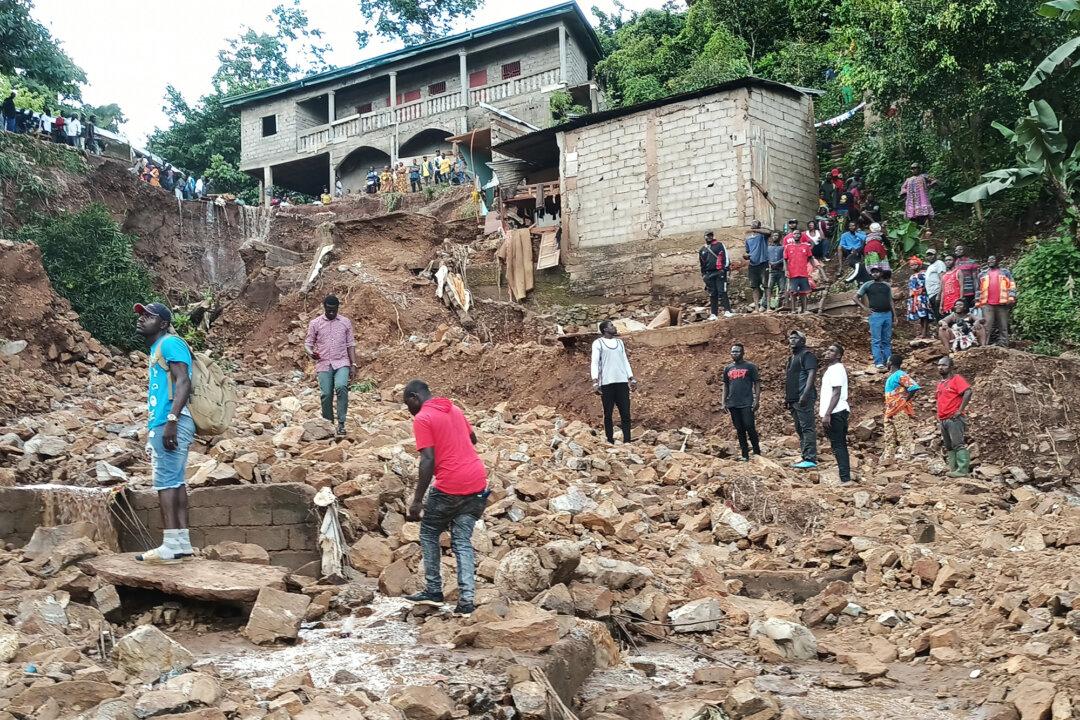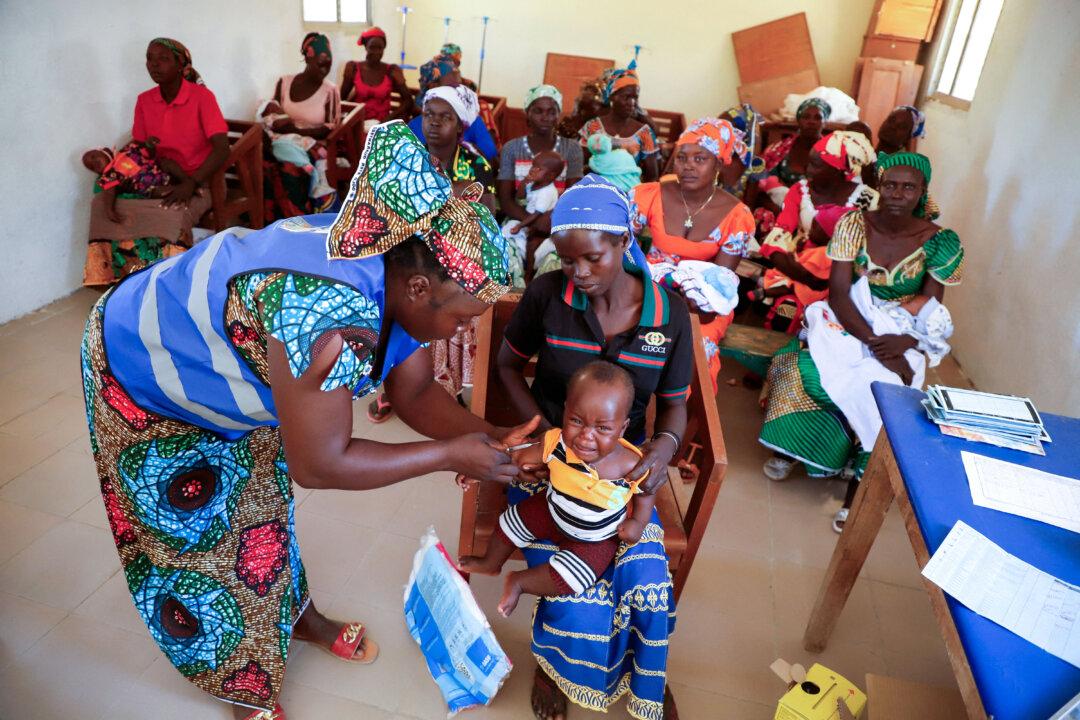A tree branch was all that Fabian Mebara had to hold on to as debris made patterns of mud in the water runoff that washed him from his house.
Mr. Mebara was using his phone in his dark room in Yaounde, on Oct. 8, when he heard a loud noise.
He went out to witness what was happening and instead was smashed into by the powerful water runoff that swept him more than 150 meters away.
“I fought hard to resist,” recollects the 49-year-old father of three.
The dam that gave way flushed its waters downstream, flattened Mr. Mebara’s house and left him with an eye injury.
“I have lost everything: TV set, pots, gas bottle, bed, telephone, money. All I have left is this dress on me. My children’s vital documents including birth and school certificates are all gone,” he tells The Epoch Times.
Prolonged and heavy rainfall caused a century-old levee holding back an artificial pond sitting on higher ground on the slopes of the Mbankolo hill— situated northwest of Cameroon’s capital city—to rupture.
The waters then carried along mud, rocks, and other dangerous materials, sweeping almost everything in their path, and causing huge human and property losses.
Despite everything, Mr. Mebara is a happy man. He is one among the few others who survived the tragedy that claimed more than 30 lives and injured scores of others.
Some residents claim not less than 100 perished in the disaster. More than 30 homes were destroyed, affecting 57 families.
“Thank God my children and my wife were not in the house the moment it happened,” he says. Unlike Mr. Mebara, another survivor, Yannick Tamgno Didero, wasn’t as lucky.
The 32-year-old lost most of his family members, including his 26-year-old pregnant wife. “I have lost my parents, my five-month pregnant wife, a brother, a niece, and a cousin,” he tells The Epoch Times.
“When I arrived in the neighborhood I heard screaming and pandemonium everywhere. We spent the whole night looking for bodies from the rubble and only found them kilometers away.”
Mr. Tamgno said four of his neighbors died while “many others are still unaccounted for.”
He also said he would have been a “dead man” today had he not gone out for a walk that Sunday. Devastated, Tamgno now relies on the “support” and “consolation” of friends and acquaintances to overcome the pain of losing loved ones.
“My only hope was to at least see my wife’s corpse. But it has not been found.”





